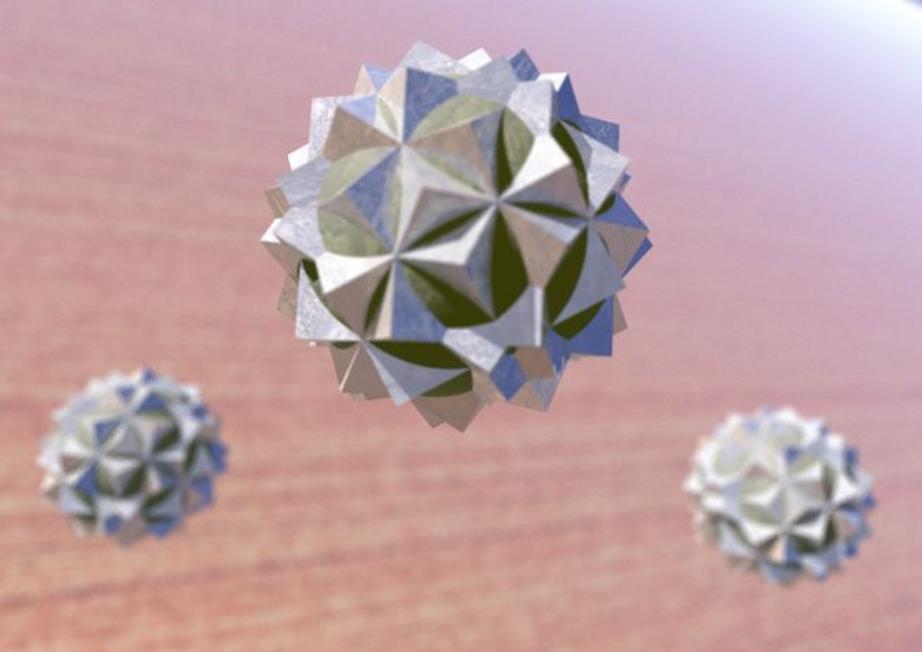Time crystals are a real thing, and researchers have made two of them
This new phase of matter makes a reality out of theoretical physics.
They sound like some fanciful fiction, the stuff of fairy tales, or some Jim Henson-inspired concoction: time crystals. But it turns out that these intuition-defying entities actually exist, according to a new research.
Time crystals were an idea first proposed by Nobel laureate and theoretical physicist Frank Wilczek in 2012. They began as mere mathematical curiosities, hypothetical objects that extend the idea of a crystal beyond the three dimensions of space and into the fourth dimension of time. Research by Wilczek published in 2016 answered some of the criticisms that have been leveled at his idea and left open the possibility that time crystals could actually exist.
Researchers used that information to make a blueprint of sorts for how to make these crystals, and in January 2017, two separate research teams managed to complete the task. And not only did they make time crystals, but "both experiments have successfully passed peer-review for the first time, putting the 'impossible' phenomenon squarely in the realm of reality," Science Alert reports.
In a time crystal, atoms move in a pattern that repeats in time rather than in space. According to the press release:
The atoms in a time crystal never settle down into what's known as thermal equilibrium, a state in which they all have the same amount of heat. It's one of the first examples of a broad new class of matter, called nonequilibrium phases, that have been predicted but until now have remained out of reach.
"This opens the door to a whole new world of nonequilibrium phases," says Andrew Potter, an assistant professor of physics at The University of Texas at Austin and one of the researchers who created a time crystal. "We've taken these theoretical ideas that we've been poking around for the last couple of years and actually built it in the laboratory. Hopefully, this is just the first example of these, with many more to come."
Breaking rules — and symmetry
One of the crystals' more bizarre characteristics is that they seem capable of achieving everlasting movement by periodically moving and then returning to an original state over and over again. This would seem to indicate that they violate a fundamental symmetry in physics, known as "time-translation symmetry."
Time-translation symmetry is a version of one of the fundamental symmetries of space-time, which essentially states that the laws of physics are the same everywhere and at all times. Wilczek and colleagues figured they can get around an underlying violation of this principle by making a crucial distinction between "explicit symmetry breaking" and "spontaneous symmetry breaking."
"If a symmetry is broken explicitly, then the laws of nature do not have the symmetry anymore; spontaneous symmetry breaking means that the laws of nature have a symmetry, but nature chooses a state that doesn't," explained co-author of the 2016 study, Dominic Else.
If time crystals merely break spontaneous symmetry, they wouldn't be the first entities known to do so in nature. For instance, symmetry is mysteriously broken in magnets, which spontaneously "choose" which pole is north and which pole is south. This doesn't break any symmetries that exist in the laws of physics themselves, it merely represents an example of the laws of physics not specifying what ought to happen.
Regular crystals such as snowflakes or diamonds actually spontaneously break symmetry too, though the symmetries they violate are all spatial in nature, not extending to the dimension of time. The spontaneous breaking of time-translation symmetry had never been observed before.
This is a mind-blowing breakthrough, to say the least. We can only hope they don't accidentally open a door to another time dimension in the meantime, spilling out Demogorgons or some other once-fictional entities from our nightmares. That's just the risk of working on the cutting edge of theoretical physics.
Editor's note: This story has been updated with new information since it was originally published in September 2016.

